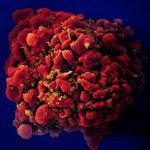Link to Pubmed [PMID] – 29258798
Semin. Immunol. 2018 04;36:56-57
In order to survive and reproduce, living organisms must be robust, tolerate injuries and undergo repair. Robustness in living organisms compares to robustness in human inventions, such as buildings and machines, which have to withstand occasional damage to avoid critical dysfunctions. However, the nature of robustness is fundamentally different in biology and in engineering. In living organisms, robustness is provided by homeostatic mechanisms, whereas in buildings and machines, it is provided by the redundancy of key elements. In this short essay, I discuss the nature of robustness in living organisms, and argue that redundancy, while important in engineering, is rare in biology.


